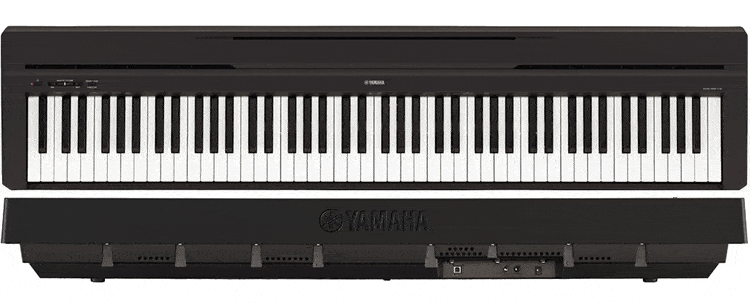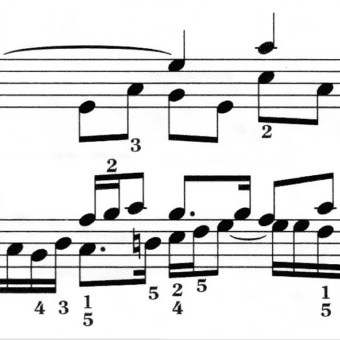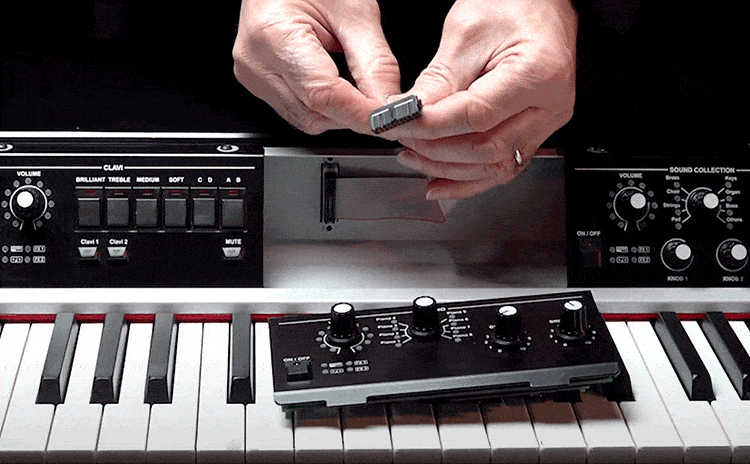Introduction
Yamaha’s P series digital pianos are about as popular as a line of digital pianos can get, especially apparent by Amazon sales statistics. For lots of folks, the combination of price, features, and brand comfort has them settling on a weighted action digital piano P series instrument. The question from there is, which one should go on your wishlist?
In this article and linked video, we’ll discuss Yamaha P45 vs Yamaha P125 Digital Pianos Comparison, which is known as the most popular Yamaha P series pianos, to see how the entry-level Yamaha P45 88-key piano stacks up to the mid-range P125.
Both instruments are portable keyboards and feature full-size 88-note weighted key hammer actions and convincing piano sound quality. You might be wondering if you’d be satisfied with the P45 or if it would make sense to spring for the P125. Hopefully, this review and comparison video will help answer that question.

Opening Thoughts
Along with Roland’s FP series, Yamaha’s P-series are undoubtedly the most popular, portable 88-key keyboards on the planet. The P45 and P125 are both well under $1,000 USD in a lot of markets, with the P45 sitting right around the $500 USD mark.
Yamaha P45

Many people will wonder exactly what separates the P45 from the P125 since it’s not a huge stretch of the budget to make the jump to P45. It turns out there are some big upgrades on the P125, to the point that unless you’re already maxed out budget-wise on the P45, it’s hard to see why anyone would stop at the P45 and not spend a little bit extra.
For some quick context, the P45 competes in a price point that happens to feature Casio’s new CDP-S350, which on paper, really outshines the P45 with many more sounds and features, plus superior speakers. You also have the FP-10 in this class, which has by far the best tone and touch out of any instrument available for the price.
Yamaha P125

The P125 competes with Kawai’s ES110, which is another huge fan favorite, along with the Casio PX-S1100 and the Roland FP-30X.
With that out of the way, let’s see how the tone engines on the P-45 and P-125 stack up.
Yamaha P45 vs Yamaha P125 | Piano Sound

Speakers
One of the biggest differences that you’ll notice right away between the two instruments has to do with the speaker configuration and location. The P45 has two downward-facing speakers, and these are each fed by 6-watt stereo amplifiers, for a total of 12 watts of power.
Anytime you have downward-facing speakers, you’re always going to have a bit more warmth to the tone because your ear isn’t coming in direct contact with some of the higher frequencies. This can sometimes create muddiness, but in the case of the P45, it actually sounds nicely warm.
The P125 conversely has an upward-facing four-speaker system. Although it looks like a two-speaker system, there are actually two different speaker cones inside each one of the speaker enclosures. The speaker system is being fed by dual 7-watt amps, for a total of 14 watts of power.

This isn’t a huge difference in power, but the fact that the speakers are facing up instead of down means that you’re getting a much more detailed sound. Check out the video for some side-by-side playing examples to hear for yourself.
Sound Engines
The next sound-related difference is that these pianos do not use the same sound engine. The P45 is using Yamaha’s Advanced Wave Memory (AWM Stereo) engine, while the P125 is using the more advanced Pure CF sound engine, with the high-end Yamaha CFIIIS concert grand piano being recreated via stereo sampling.

The extra processing power of the Pure CF engine as evidenced by the fact that the P125 has 192 notes of polyphony compared to just 64 notes of polyphony on the P45. 64-note polyphony is definitely on the low side for the price, and while it might still be fine for solo piano playing, it’s definitely quite light.
In addition to the tone engine, the difference in the quantity of the instrument sounds between the 125 and the P45 is also pretty substantial. We’ve got 10 tones to choose from on the P45, vs 24 on the P125.
The various other patches on both pianos sound good, but there’s a higher level of authenticity on the P125, especially with the electric pianos and organs, and just the extra variety of sounds as mentioned.
Wrap Up
So, it’s pretty clear. The P125 definitely outmuscles the P45 in every regard when it comes to sound, and these aren’t just on-paper differences either – the P125 definitely sounds noticeably better.

Yamaha P45 vs Yamaha P125 | Piano Action
Graded Hammer Standard (GHS) Action
Both pianos are actually outfitted with the same action as Yamaha’s Graded Hammer Standard (GHS) action. This is a functional action, and while it’s not our favorite in the price range, it’s by no means a bad action.

Some common complaint about the GHS action is that it uses a dual-sensor and doesn’t have any let-off/escapement. The other issue common to many people’s playing experience with this action is that the white key can get very sticky when playing for extended periods of time. This isn’t the case with the Black Keys fortunately due to a matte finish that feels nice on the fingers.
Touch Sensitivity
On the other hand, there are things about the action that Yamaha has done a really good job of, such as the overall weighting which is really good. The touch curve is well done too, and there are a few adjustable levels of touch sensitivity to accommodate different playing styles.
What we have then is an action that will serve its purpose – a beginner taking piano lessons can definitely develop good technique on this action – it’s just not the best action available for the dollar.
Let’s move on to the final section where compare piano features and connectivity.
Yamaha P45 vs Yamaha P125 | Piano Features & Connectivity

Bluetooth and USB Audio Output
Starting with connectivity, there are some key things to note. While neither instrument has any Bluetooth connectivity, the P-125 has something very cool that the P45 doesn’t and that’s a built-in USB Audio Interface. This is super useful if you’re looking for an instrument to connect to and use with a DAW since it cuts down on extra gear.
The P45 is pretty light with connectivity, with a standard DC In for power supply, a sustain pedal port, and a USB to Host port.
The P125 has the same DC In for a power adapter, but dual headphone jacks, a sustain pedal port, a triple pedal unit port, USB to Host, and possibly most importantly, AUX line outputs if you want to connect to an amp. Neither piano has traditional 5-pin MIDI connectivity.
Keyboard Stand
Both come available with a matching keyboard stand from Yamaha, but the Yamaha P125 also has the option for a triple pedal unit, which the P45 does not.
In terms of standard feature specs, both pianos have a metronome, transpose, dual-mode, and duo mode. Both pianos come with a music rest and a basic footswitch pedal, but we’d recommend upgrading to a better pedal that more closely resembles a real piano pedal.

A final highlight worth noting with the P125 though is the built-in auto-accompaniment, wherein you’re given 20 rhythms and accompaniment styles to work with.
Closing Thoughts
In conclusion, we’ve got two pianos here for the same series that aren’t hugely separated by price, but actually quite different in their offerings.
Now, if your budget is already stretched at the price point of the P45, it’s certainly a fine option, and one of the best digital pianos available at the said price point. And since it has a USB, you could use it as a MIDI controller.
If you can make the jump to the P125 without breaking the bank, it’s definitely worth it. The grand piano sound is just closer to an acoustic piano courtesy of the upgraded sound engine and additional speakers, as are other sounds like a harpsichord.

You’re also getting more features, connectivity, and the USB audio interface. Both might be tough to find in stock these days, so just prepare for a possible waiting period after you’ve made a decision.
Thanks for reading. Be sure to check out the video version of the article and more of our piano reviews on YouTube!


